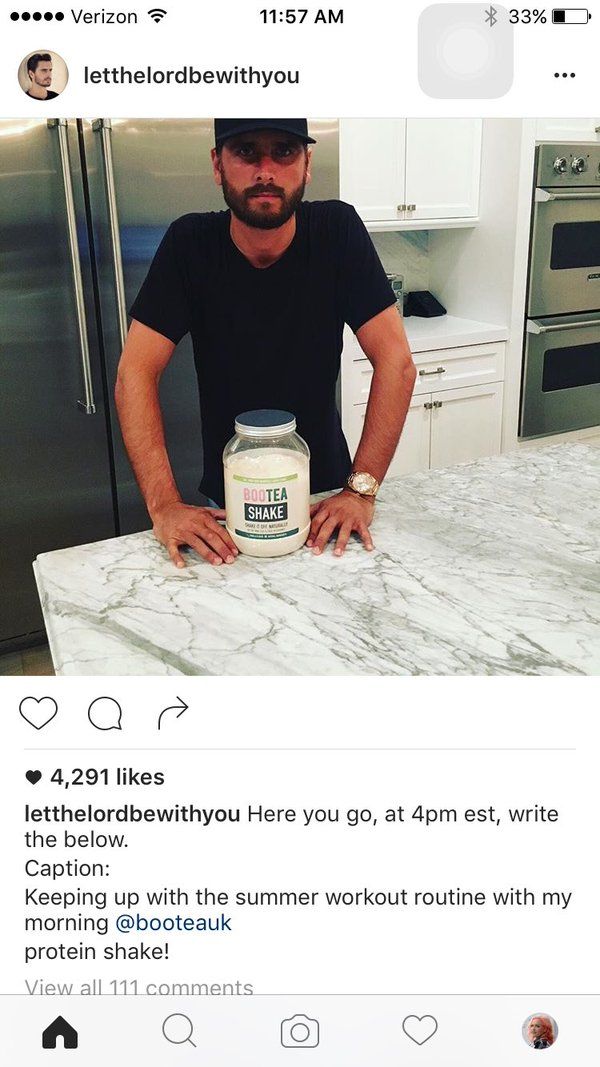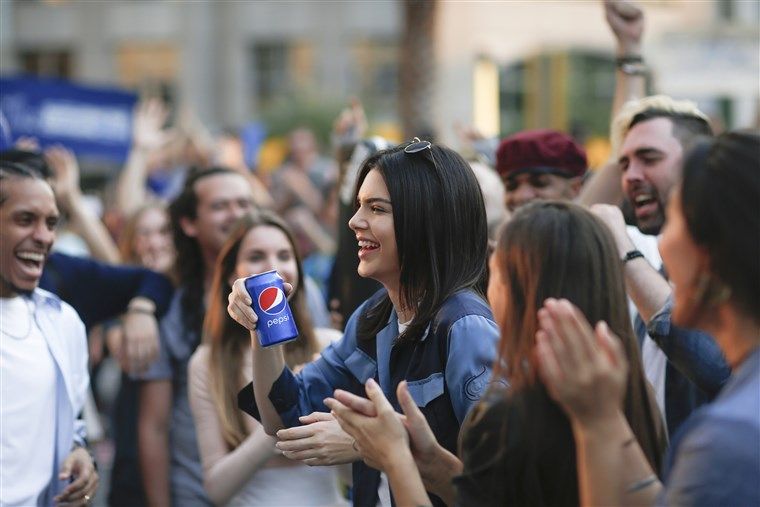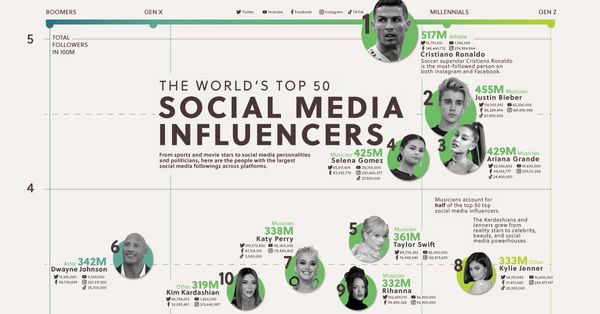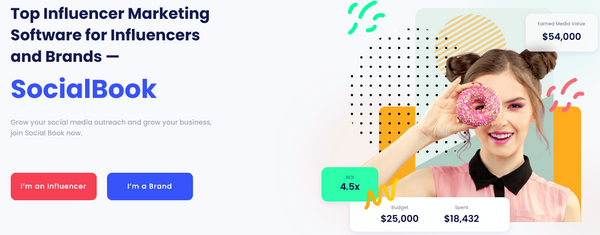Influencer marketing campaigns are a vital component of any marketing strategy today. A report by consulting firm Tomoson reveals that influencer campaigns produce an average return of $6.50 for every dollar spent. But what about those campaigns that somehow go off the rails, damaging a brand’s reputation while providing less than stellar returns? What can such a mishap mean for your brand, and even more to the point, how can brands avoid campaign fails altogether?
Ahead we dissect three notorious influencer marketing fails and unpack what happened so that fellow influencer marketing managers can avoid having such misfires in your influencer marketing campaigns.
Two examples are cautionary tales for brands and the third is aimed at influencers themselves. The gist of the lesson for brands and influencers alike is to be selective about forming partnerships, and that means being very certain about whom you are joining forces with before you sign on the dotted line.
The Pepsi Ad—Yes, That Pepsi Ad
No discussion about influencer-marketing campaigns gone wrong would be complete without a prominent mention of the infamous 2017 Kendall Jenner Pepsi ad, curiously modeled on a Black Lives Matter protest photo.
The ad drew comparisons to an extensively shared photo of Ieshia Evans, a black protester who remained in a state of admirable calm while being arrested by riot police at a July 2016 Baton Rouge protest.
The ad, in which Jenner walks up to a line of police officers who are in riot gear and hands one of them a Pepsi, was widely perceived as trivializing the movement and the protests that inspired it. Elle Hearns, executive director of the Marsha P. Johnson Institute said in response to the ad, “That’s not what it looks like to take bold action.”
Ending with a directive to “LIVE BOLDER,” “LIVE LOUDER” and “LIVE FOR NOW,” the naïve approximation of a protest grossly minimizes the dangers faced by real-life protesters who are often literally putting their lives on the line to stand up for their basic human rights.
The ad provoked a backlash of criticism from the likes of Bernice King, daughter of Martin Luther King Jr. and Coretta Scott King, who tweeted her response—along with a photo of her father confronting police during the June 1966 ‘March Against Fear’:
If only Daddy would have known about the power of #Pepsi. pic.twitter.com/FA6JPrY72V
— Be A King (@BerniceKing) April 5, 2017
The takeaway: This Pepsi influencer marketing campaign essentially changed the conversation in this infamous fail. With a healthy dose of hubris mixed with equal parts delusion and naivete, the brand appropriated the message of a movement and translated it into a watered-down, feel-good message blatantly designed to sell product.
The caveat here is that there is absolutely no shame in selling something; the important thing to remember is that you must be clear about your message and your own intentions as an organization when you decide to tackle a larger issue like human rights or the environment in your advertising.
It is acceptable and even admirable to be boldly who you are as an organization—Think Ben and Jerry’s or Penzey’s—but it has to be who you truly are and not an affected approximation of what you’d like to be, or worse what you think your public wants you to be.
What holds true for people pleasing in personal life holds true for people pleasing in influencer marketing: Just don’t. Be true to the spirit of your organization and your target audience will be drawn to your product. Putting on a show of advocacy that is not quite in alignment with your mission as a company is a tactic that is bound to fail spectacularly as soon as people detect the slightest hint of insincerity.
While it is best to go with making statements that you are compelled to make because they have meaning for your company, if your team is absolutely set on tapping into the collective consciousness and taking a position on a popular issue, please consider seeking expert counsel. If there are no members of your team who have personal connections to your chosen cause, you might opt to hire a consulting firm like TranslateMedia who can guide you in communicating your intended message to your target audience.
The BooTea-Scott Disick Instagram Post

BooTea thought it hit the influencer jackpot when they signed on with a half hearted Scott Disick to represent their brand; Scott apparently thought he was just adding another notch to his belt.
His phoned-in sponsored post in which he merely pasted in the email sent him from the company read; “Here you go, at 4pm est, write the below. Caption: Keeping up with the summer workout routine with my morning @bootea protein shake!”
This is the Instagram equivalent of reading everything on the cue card while filming a commercial “Try delicious BooTea! Pick up product and smile brightly.”
The Takeaway: Disick’s hilarious fail got a lot of attention on Instagram, which ended up being a win for the brand.
Hilarious fails by your influencers may be all very well and good if you are an established brand who can afford to pay someone like Scott Disick $20,000 per Instagram post, but for brands just starting out and hoping to gain exposure it is best to partner with an influencer who is a sincere fan of your product.
Try a platform like SocialBook to find influencers who have smaller, more dedicated niche audiences who will be interested in your product. You will be able to gather information about influencer audience type and reach, and engage directly with influencers who post content that is relevant to your brand. Conscientiously vetted influencers will be far too enthusiastic about your brand to phone in their posts.
The Fyre Festival

A ‘luxury’ music festival described as having all the ambiance of a Hunger Games or Lord of the flies situation severely overpromised on amenities in their social-media promotions, becoming a cautionary tale for influencers and consumers that has inspired two documentaries.
The Fyre Festival was a spring 2017 music festival in the Bahamas promoted by confidence man Billy McFarland and rapper Ja Rule that was billed as an event of a lifetime, promising top artists like Blink 182, along with luxurious food and accommodations. What attendees found instead is well documented in Instagram posts of the event, which show desolate grounds populated only with deserted tents.
Social media heavyweight influencer Kendall Jenner is implicated yet again in this example, along with fellow model Bella Hadid. Both promoted this music-festival-that-never-quite-happened on Instagram. In the end, the ‘festival’ ended up being just one group of local musicians who played for a couple of hours on the evening of the guests arrival. Kendall Jenner and Bella Hadid facing possible subpoenas over Fyre FestivalThese three social influencers are facing charges regarding.
You may recall one widely shared photo that truly captured the spirit of the event. It is of a solitary, defeated-looking, open-face cheese sandwich served in a Styrofoam container. The sandwich, just like the event itself appeared to have no life force at all.
Bella Hadid issued a half-hearted apology, insisting that she had “…trusted that this would be an amazing & memorable experience for all of us…” and ending with “I feel so sorry and badly because this is something I couldn’t stand by, although of course if I would have known about the outcome, you would have all known too.”
The festival organizers ended by promising refunds or VIP tickets to a 2018 festival organized by a more experienced team but unfortunately, this promise was not upheld.
The Takeaway: Half-hearted apologies won’t cut it. As an influencer, if you decide to partner with a brand the onus is on you to know the details about what product, service or event you are promoting.
Kendall Jenner was dragged on Twitter for her promotion of the Fyre Festival—which happened right on the heels of the Pepsi debacle—with users tweeting statements like “Not a good year for Kendall Jenner sponsored things eh?” and “Don’t worry #fyrefestival, Kendall is bringing Pepsi in the morning.”
While some have pointed out that the Fyre Festival scandal proves the power of influencer marketing, keep in mind that Jenner can survive the backlash. She has 27.2 million followers on Twitter and 102 million followers on Instagram. If you are a micro influencer just establishing your personal brand, you may not come through negative publicity so unscathed.
While the promise of a payout may seem enchanting in the short run, it is not worth compromising the integrity and reputation of your personal brand in the long run. If you are considering partnering with a brand just starting up, vet them like they—we hope—have vetted you. Have a look at their business plan, chat with their team on Skype and trust your instincts in determining whether or not the partnership is a good fit for you.
End of Story
The ultimate takeaway from these examples is that who you partner with matters. It is very important as a marketer to thoroughly vet potential influencer-partners to make sure that they are a good fit for your brand and that their values align with the values of your company. If you also make sure that your influencer-partners are fans of your product, you will effortlessly avoid phoned in posts a la Scott Disick.
Another point worth considering is that, while an influencer may align with your brand message in general, she or he may not be right for every influencer marketing campaign—another takeaway from the Kendall Jenner-Pepsi fiasco.
And for influencers, remember that it is equally important for you as content creators to thoroughly vet potential brand partners. As an influencer, your followers trust you. Don’t disappoint them and yourself by compromising your integrity with influencer marketing sponsored posts that don’t truly represent your personal brand.
Want to find out how to find the best Instagram influencers for your target demographic? Head on over to SocialBook for a free demo and trial to find out how!







